The Isle of Skye, with its dramatic landscapes and open skies, is one of the best places in Scotland to catch a glimpse of the mesmerizing Northern Lights. Of course, you do need to have clear skies rather than clouds, which is often the main reason why you might miss a display here!
However, the weather and conditions can change quickly, so if you’re prepared, then you can be ready to go if there is a chance of seeing aurora in Skye.
You can’t count it as a guaranteed thing to do in Skye in the winter season, but with high activity expected over the 2024/2025 season, it’s worth checking on a clear night to see if anything is visible.
Here’s everything you need to know to plan your aurora-hunting adventure on Skye!
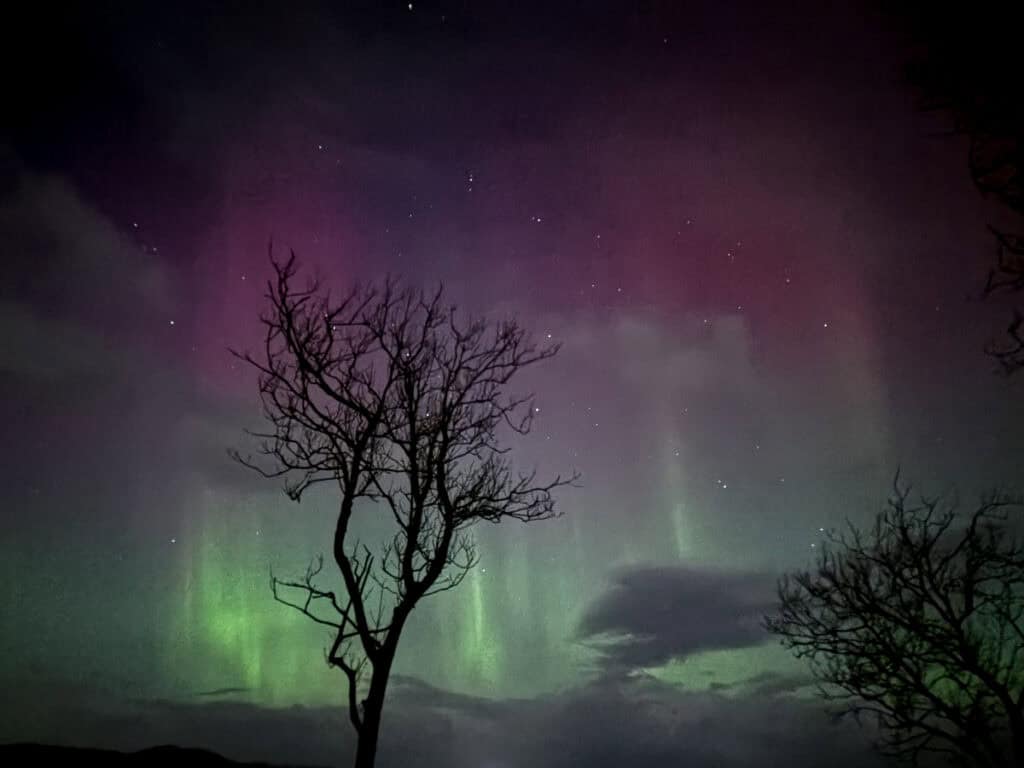
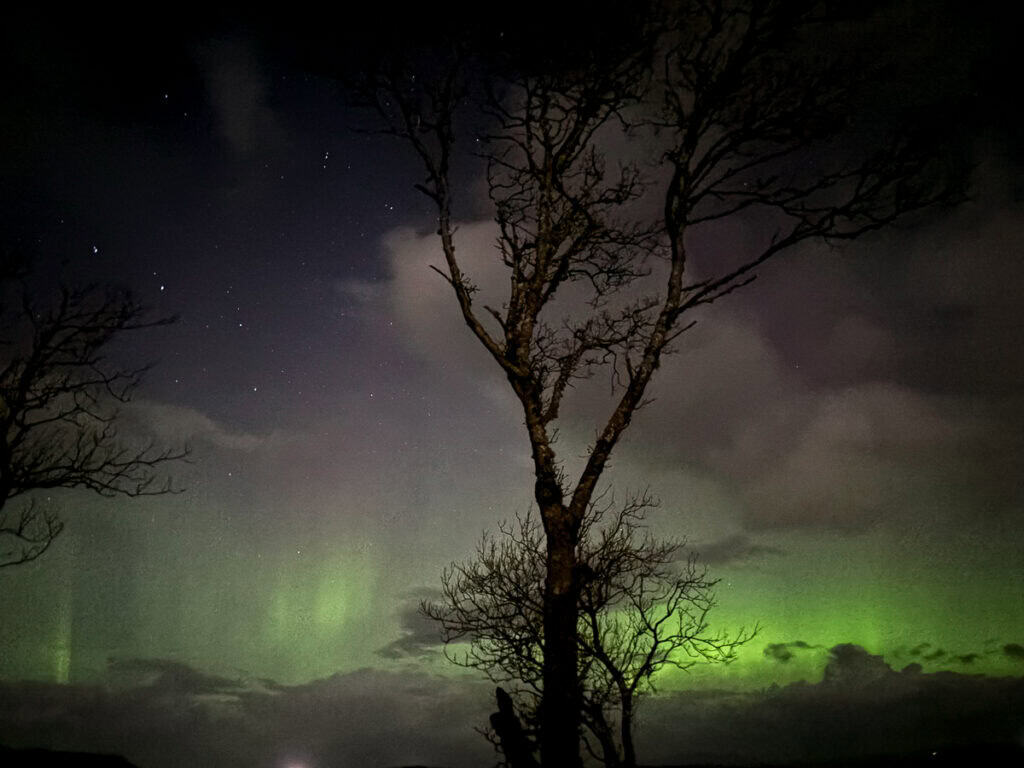
What Are the Northern Lights?
The Northern Lights, or Aurora Borealis, are a natural light display caused by particles from the sun colliding with Earth’s magnetic field. This interaction creates colourful, shimmering lights that dance across the sky in shades of green, pink, purple, and red.
Seeing them in person is unforgettable, especially in a remote, beautiful setting like Skye.
The Isle of Skye is far enough north that we often have displays, but they are not always clearly visible to the naked eye or as visible as they would be in places such as Iceland or Norway.
However, since I moved to Skye, I’ve seen them at least three times easily with the naked eye, and some absolutely amazing shows!
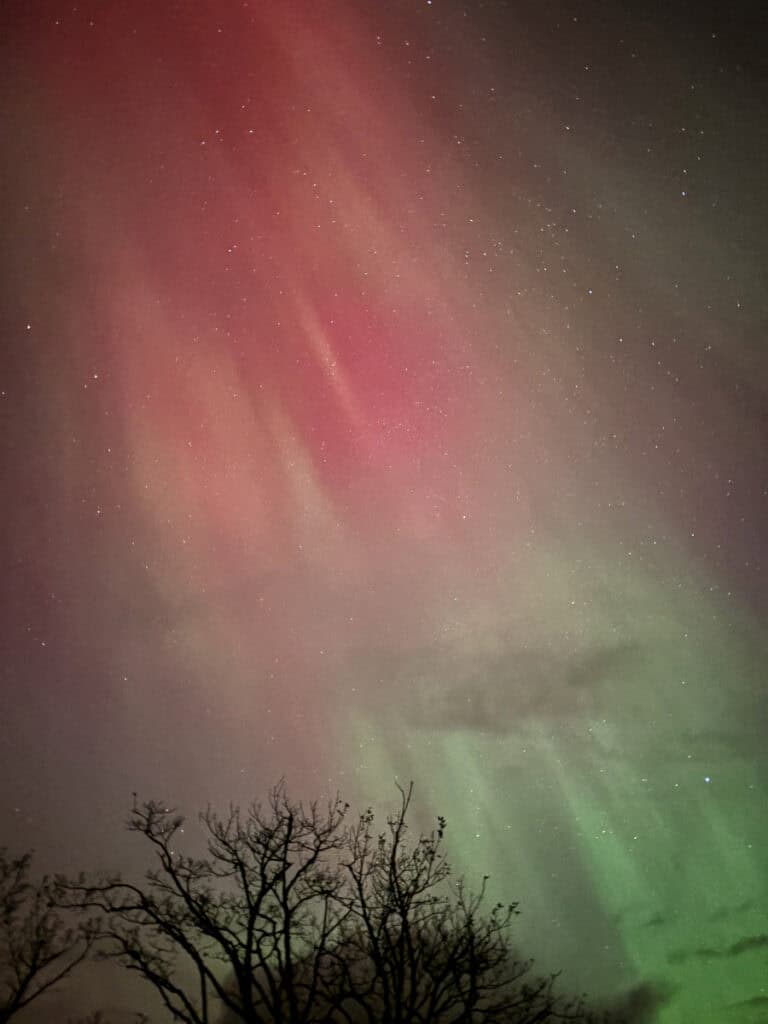
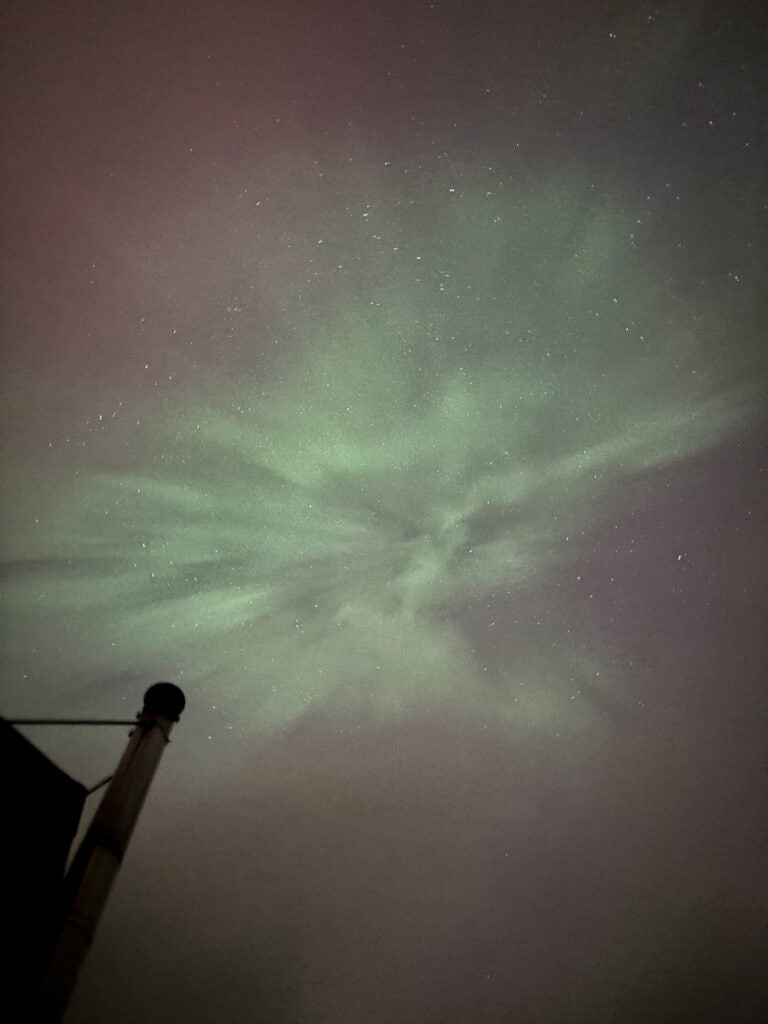
Best Time of Year to See the Northern Lights on Skye
The best time to see the Northern Lights on the Isle of Skye is from September to March. During these months, the nights are longer and darker, giving you a higher chance to witness the auroras if conditions are right. Winter, in particular, offers the darkest skies and can be ideal, though the weather can be unpredictable, so clouds might hamper the view.
While the Northern Lights are never guaranteed, the key is to look for clear, dark skies and to check the aurora forecast for increased solar activity. Apps and websites like AuroraWatch UK or the Glendale app can alert you when there’s a higher chance of seeing the lights.
It is not possible to predict the northern lights far in advance. If there has been recent strong solar activity, they may be able to say so a day or a little more in advance, but then you rely on the conditions where you are being favourable.
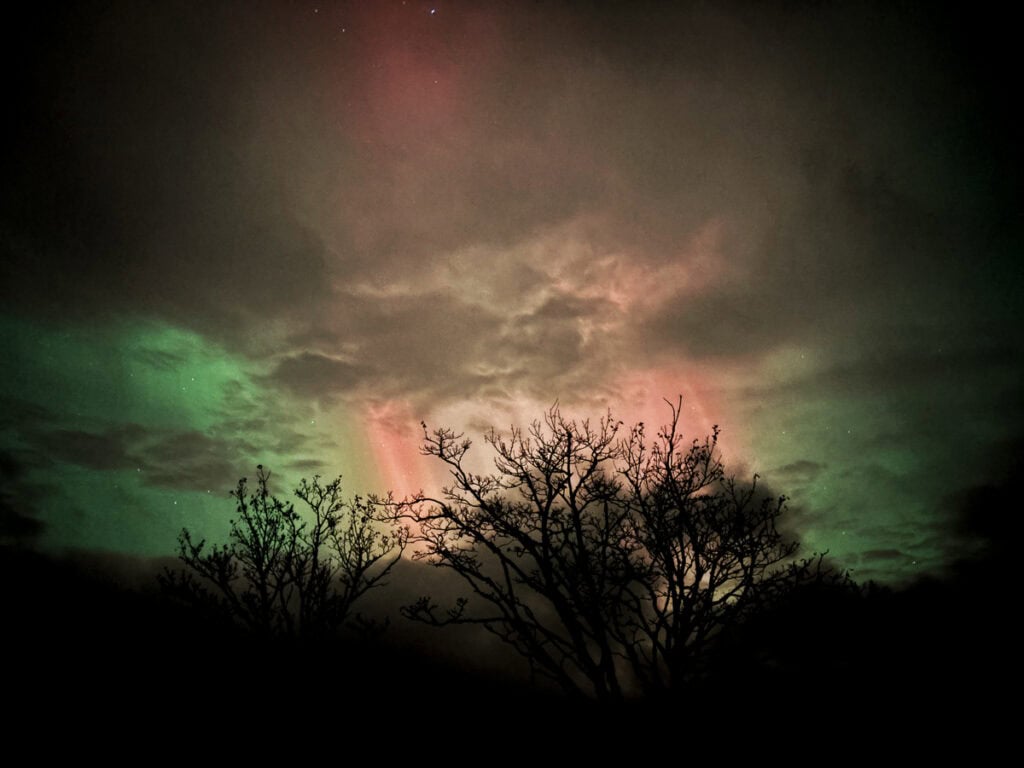
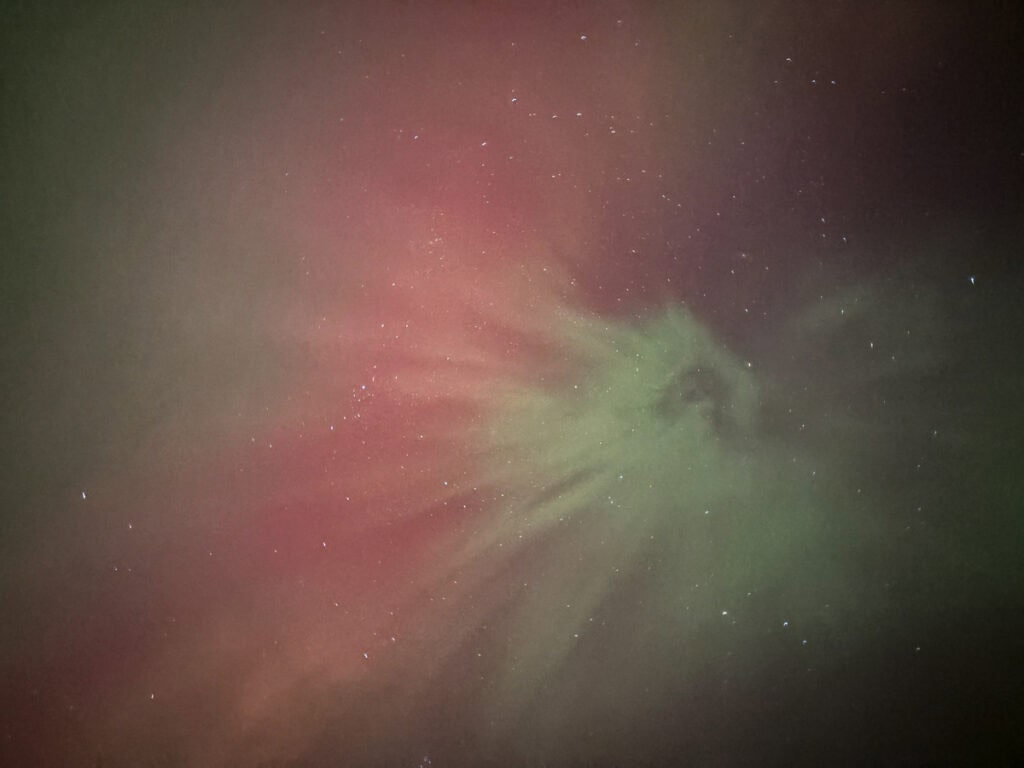
Top Tips for Seeing the Northern Lights on Skye
Choose a Dark, Remote Spot
The more isolated and free from light pollution, the better! To be honest, we are very lucky in that although there is a little light pollution where we live, it’s not in the direction the Northern Lights normally are, and we can easily angle away from it.
It’s not always easy to get to a darker spot quickly. Shield your eyes and any camera equipment and see if you can see anything.
Look North
The Northern Lights, as the name suggests, are most often seen in the northern sky. Find a location where you have a clear view in that direction.
Sometimes, the aurora is closer to the horizon and other times higher up in the Skye. If it is particularly strong, it can even be right overhead.
While a northern direction is the most common, try northeast or even slightly northwest, too, as it can sometimes change.
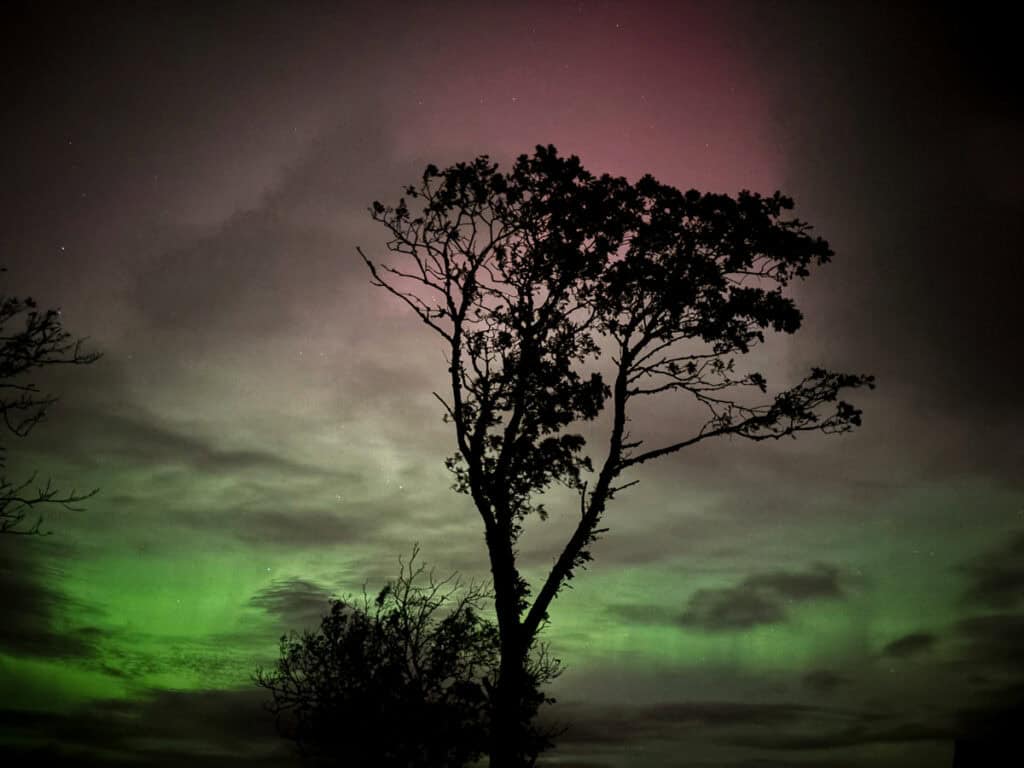
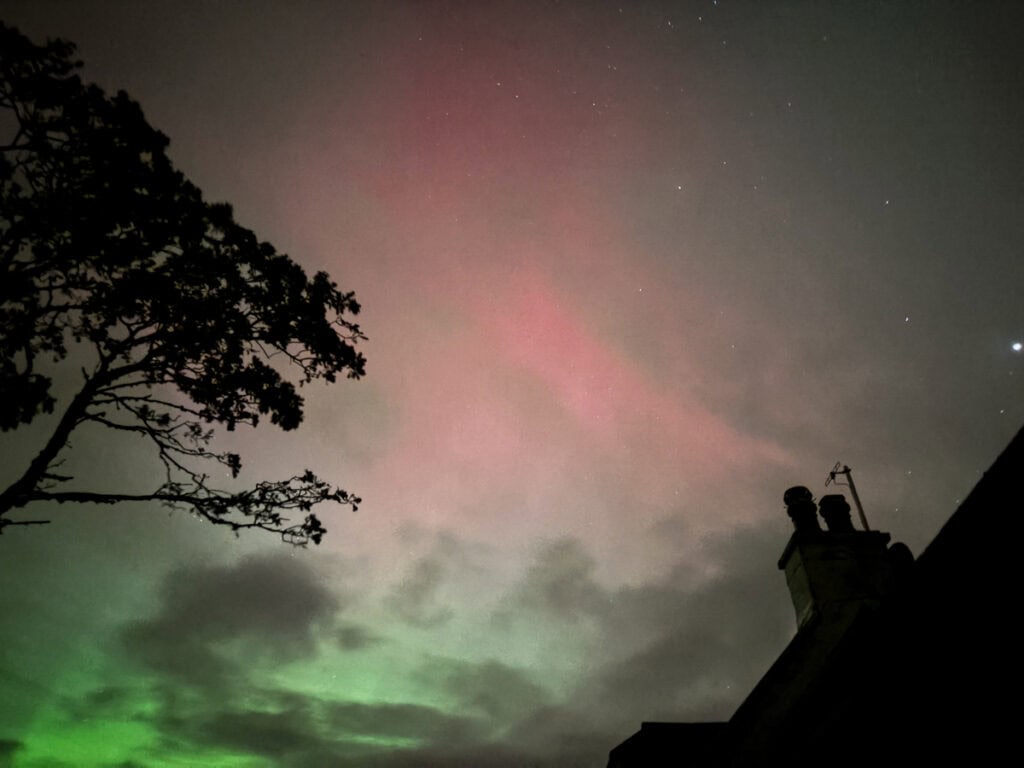
Check the Weather
Clear skies are essential. Check local weather forecasts and focus on nights when the sky is expected to be clear.
Even if it’s cloudy, it’s worth checking how thick the cloud cover is and if it blows over occasionally. Some of the best northern lights in Skye I’ve seen are in breaks in the cloud!
Be Patient and Prepared
Sometimes, the auroras show up quickly, but often they require waiting. Dress warmly, bring blankets, and make a night of it. A thermos of tea and snacks can make the experience more comfortable.
If you are paying attention to the app alerts and in a position that can get outside to somewhere suitable for viewing quickly, you may be lucky enough to see the alert and head out for it!
Often, aurora displays can build up or come and go as the night goes on. Then, sometimes, they will be a one-off, and nothing else comes along.
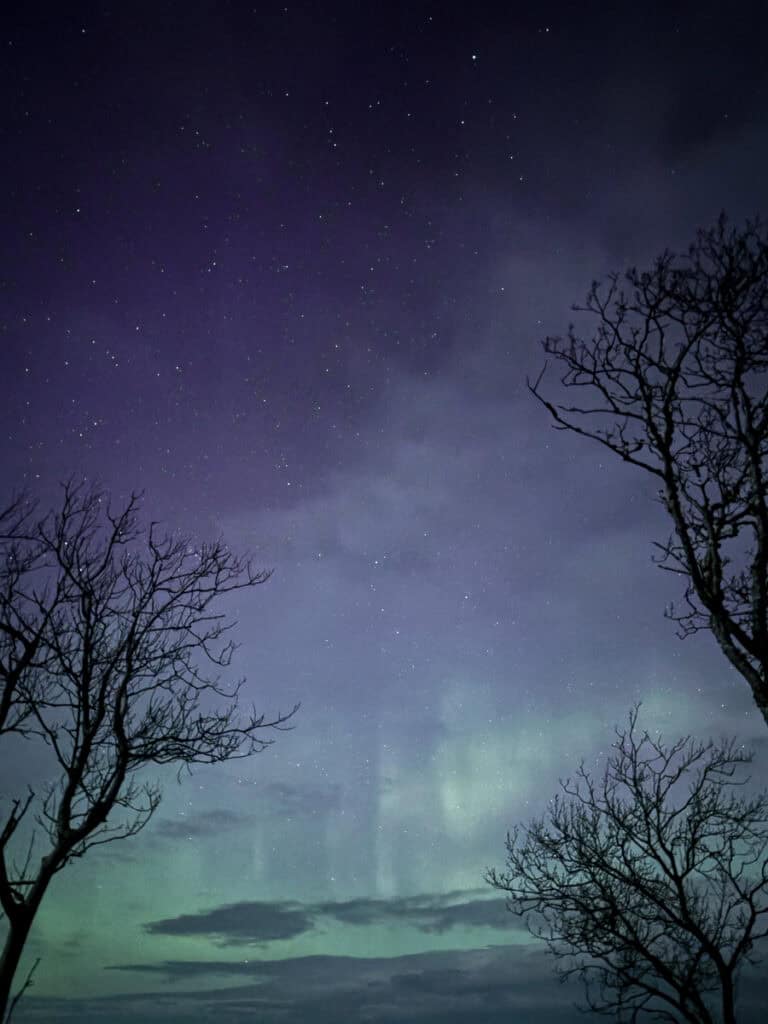

Stay Updated
Solar activity can change quickly. Having an Aurora alert app on your phone can help you stay informed about any changes.
Phone and Camera Tips for Capturing the Northern Lights
Getting a good shot of the Northern Lights can be challenging, especially on Skye’s often windy nights, but with the right settings, it’s achievable.
All of the photos in this post have been taken with an iPhone (15), so don’t feel like you have to have fancy camera equipment to make it work! These are all minimally edited to make the file size smaller so I could upload them.
The most important thing either way is keeping still and having an exposure time of at least 3 seconds long, or more if you can.
What the camera picks up and what we can see are quite different. Often I can see the greens or reds with the naked eye but the purples less so, if at all.
As a tip, try to have something in the photo other than just the sky, to give it perspective. We luckily have these trees you see in most of my photos!
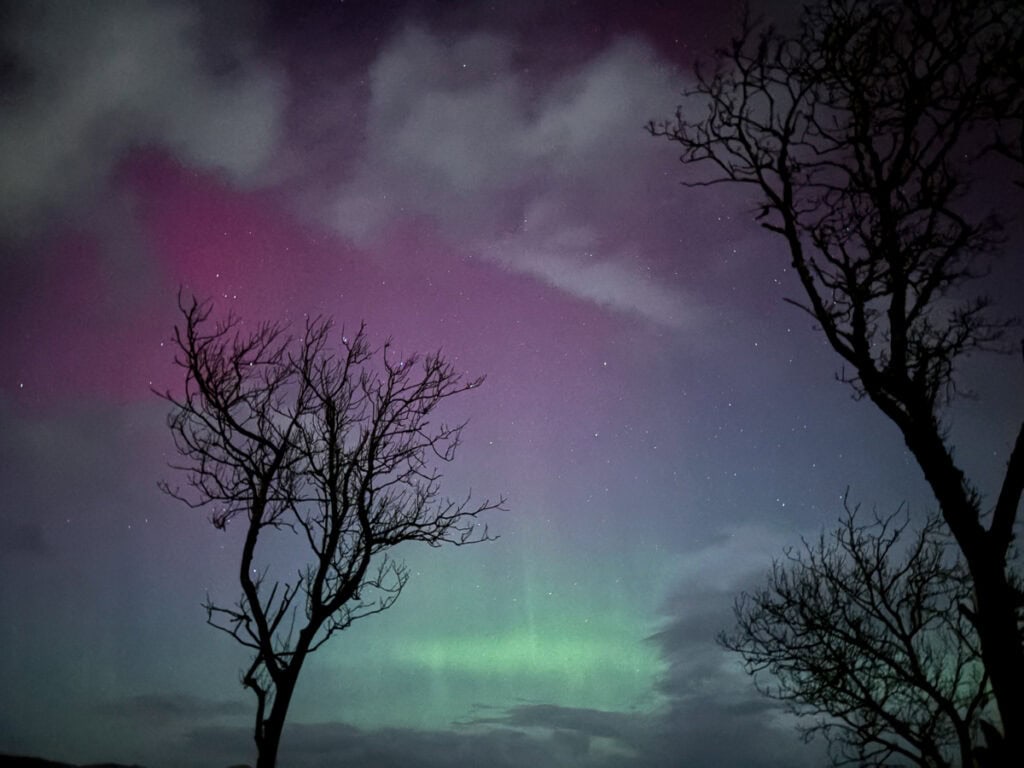

For Phones:
- Use a Tripod: A stable surface is essential, as any movement will blur the image. I often hold my breath as I take the photo to keep steady or lean the phone against something to get a bit more leverage.
- Find the Night Mode: Many newer smartphones have night mode options or “pro” settings where you can adjust ISO and exposure. I usually adjust the shutter speed/exposure time.
- Adjust Exposure: Set the exposure time to around 10-30 seconds to let in enough light. My phone does 3 or 10. Sometimes 3 is enough, or I set it to 10 but then need to be steady for longer!
- Increase the ISO: If your phone has the option, boost your ISO to capture more light, but be careful as high ISO can introduce noise.
For Cameras:
- Use Manual Mode: Set your camera to manual mode to have control over exposure, ISO, and focus.
- Set ISO Between 800 and 3200: You’ll likely need a higher ISO, but finding the right balance depends on your camera.
- Use a Wide Aperture: A wide aperture (like f/2.8 or f/3.5) lets in more light and helps capture the colours.
- Focus Manually: Autofocus can struggle in low light, so switch to manual focus and set it to infinity. Test by focusing on a distant light before the auroras start.
- Experiment with Shutter Speed: Shutter speed can range from 10 to 30 seconds. Start with 15 seconds, and if the auroras are bright, try shorter exposures.
Seeing the Northern Lights on the Isle of Skye is a truly magical experience. By planning ahead and following these tips, you increase your chances of not only seeing the auroras but also capturing them to share or keep as a memory.
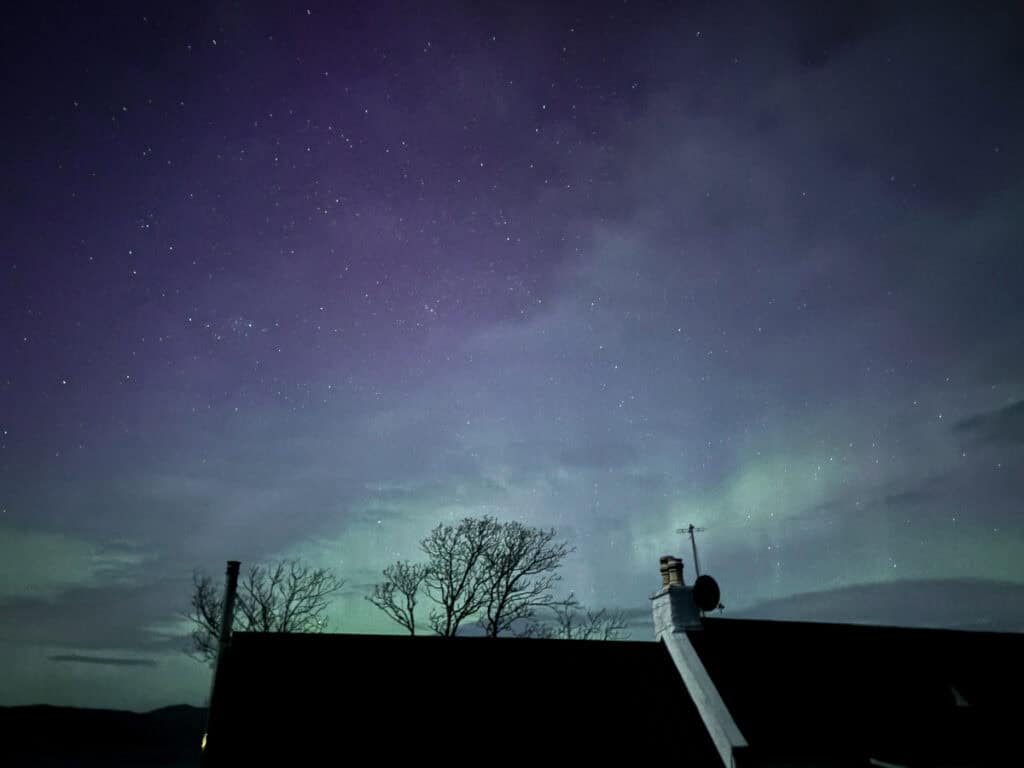
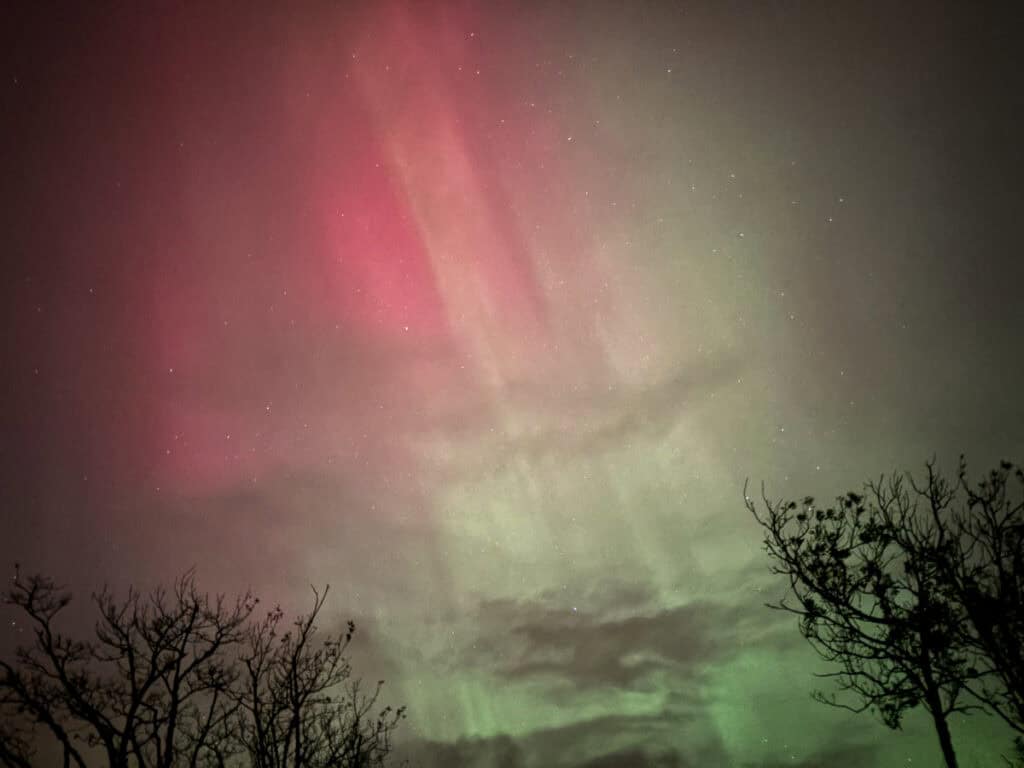
Coming to the island in the winter is a totally different experience than the summer. And while there is no guarantee that you’ll see the northern lights in Skye, it’s well worth being aware of how and when to spot them so you don’t miss out if they do appear!
Good luck!
Sonja x





